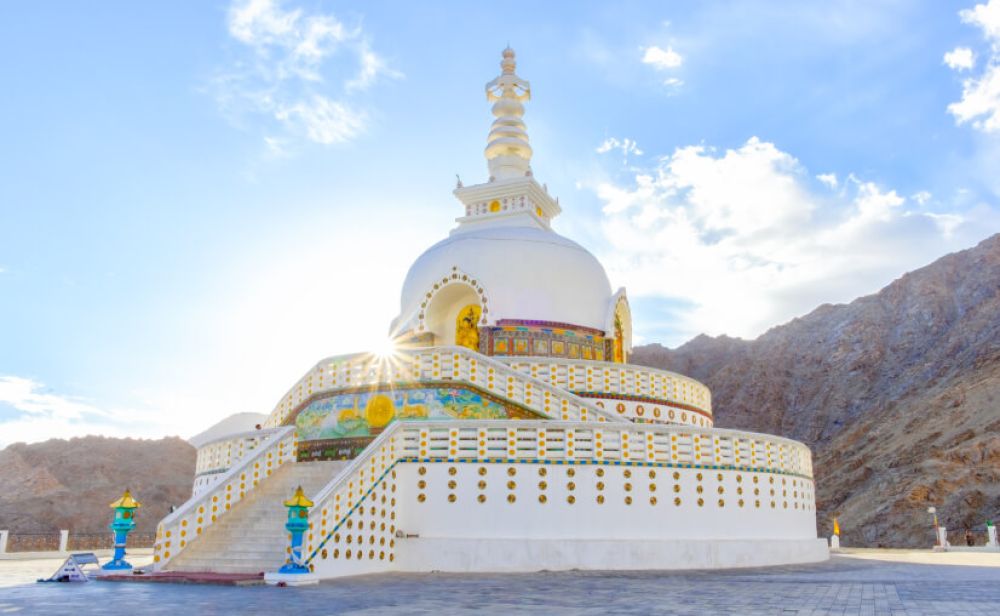

Set against the dramatic backdrop of the Himalayas, the Shanti Stupa in Leh is not only an important edifice of Buddhism but also a popular tourist attraction in the Indian region of Ladakh. The white-domed stupa has a history that intertwines the evolution of tourism in this enchanting high-desert city.
The Shanti Stupa was erected in 1991 by Japanese Buddhist monk, Gyomyo Nakamura, with the intention to promote world peace and prosperity as well as to commemorate 2500 years of Buddhism. It was inaugurated by the 14th Dalai Lama himself, further cementing the stupa's significance in the Buddhist world. The stupa holds the relics of the Buddha at its base, enshrined by the Dalai Lama, making it a revered site.
Leh has been a crossroads of trade centuries before it became a tourist hub. However, it was in the latter half of the 20th century that tourism began to take root, especially with Leh opening up to foreigners in 1974. Since then, the influx of tourists has grown, with many drawn to the region's stunning landscapes, spiritual sites, and vibrant culture.
The Shanti Stupa adds to Leh's allure, attracting visitors from all over the world. It stands as a testament to peace and spirituality on a hilltop, providing panoramic views of the surrounding landscape, which includes the city of Leh, the Leh Palace, and distant mountain ranges. This accessibility and breathtaking scenery make the stupa a must-visit destination for travelers.
Visitors often climb the steps to the Shanti Stupa to catch a glimpse of the sunrise or sunset which casts the surrounding mountains and the stupa itself in a spectacular array of colors. The stupa also houses a small museum that contains photographs and remnants concerning its creation and other Buddhist artifacts.
Currently, eco-tourism and sustainable travel are significant trends in the Leh region. There's a growing sensitivity towards preserving the delicate ecology and culture of Ladakh. Homestays, eco-friendly accommodations, and involvement in local culture and traditions are encouraged. Tourists are more aware of their carbon footprint and are seeking to explore Leh in responsible and sustainable ways.
Adventure tourism is another trend that continues to thrive in Leh. Activities like trekking, mountaineering, and river rafting are popular. The Shanti Stupa serves as a serene respite for such thrill-seekers, offering a peaceful environment to relax and reflect.
As tourism continues to grow, efforts are being made to maintain the sanctity and beauty of the Shanti Stupa and its surroundings. Both the local government and the Buddhist community are working to ensure that the influx of visitors does not disrupt the essence of this important spiritual site.
In conclusion, the Shanti Stupa is more than just a monument; it is a symbol of peace and harmony that coexists with the tourism industry of Leh. It offers travelers a unique blend of spirituality, culture, history, and natural beauty, making it a cornerstone of Leh's tourism and a beacon of peace for all who visit.